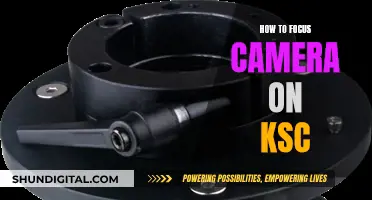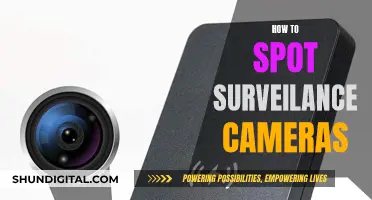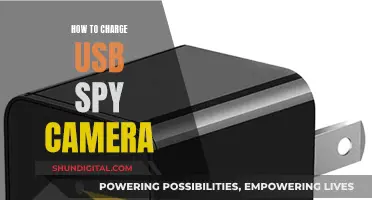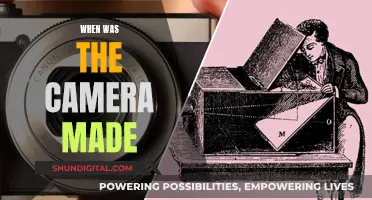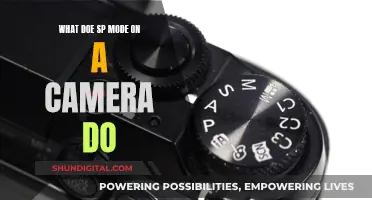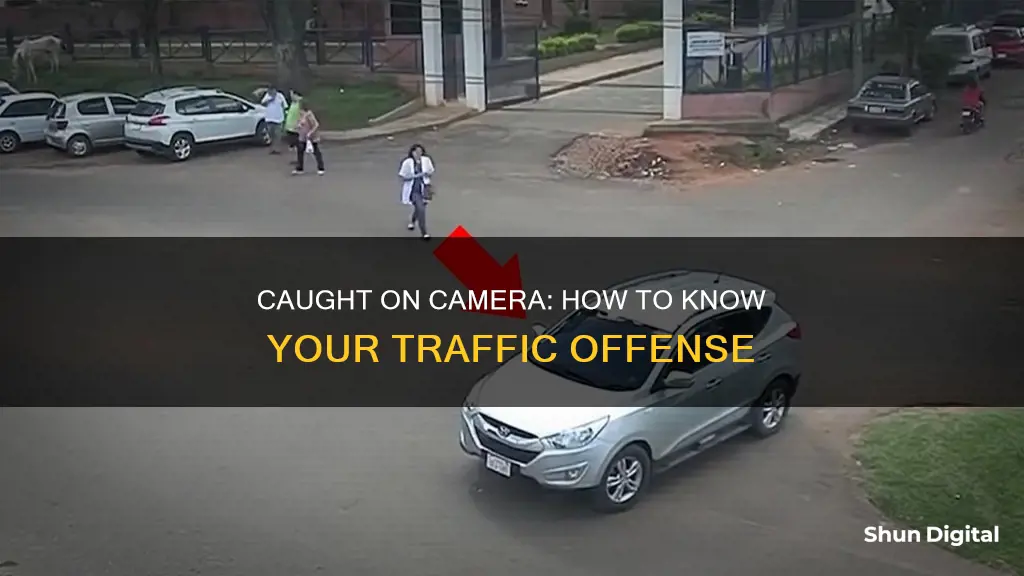
Traffic cameras are a common sight, and it's natural to wonder if you've been caught by one. While it can be unnerving to think about the potential consequences, there are a few ways to find out if you've been caught. Firstly, you may notice a flash in your rearview mirror or spot distinct equipment mounted on a nearby vehicle. However, newer cameras may use an infrared flash that is harder to notice. In most cases, you will receive a fine by mail, which can take around two weeks to arrive, but this timeframe varies depending on your location. In some places, you can check for outstanding fines online or by contacting the relevant department. Keep in mind that traffic camera regulations differ across locations, so understanding the specific rules where you live is essential.
| Characteristics | Values |
|---|---|
| How do they work? | Red light cameras are triggered by sensors installed in the road. |
| What do they photograph? | This varies from state to state. Some states prohibit pictures or videos of the driver, focusing on the rear of the vehicle, while others may include the driver in the image. |
| How common are they? | Red light cameras are not very common as they are expensive to install. They are usually found in urban areas with heavy traffic and a higher percentage of crashes due to violations. |
| How will I be notified if I've been caught? | You will typically receive a ticket via postal mail or through an app. The average time to receive a fine is about two weeks, but this can vary depending on your location. |
| What happens if I don't pay the fine? | Unpaid violations can be sent to collections, but this depends on state laws and jurisdictional involvement. |
What You'll Learn
- Red light cameras are triggered by sensors when a vehicle passes a stop line
- You may notice a flash when a camera is triggered, but this isn't always the case
- In most cases, you will only know for sure that you've been caught if you receive a ticket
- Red light cameras are not constantly taking pictures
- The process for checking if you have an outstanding fine differs depending on your location

Red light cameras are triggered by sensors when a vehicle passes a stop line
Red light cameras are an effective way to enforce traffic laws and improve road safety. They are designed to capture images of vehicles that run red lights, providing evidence for issuing traffic tickets. These automated systems use sensors to detect vehicles passing through an intersection during a red signal, triggering the camera to capture the violation.
The operation of red light cameras relies on the interaction of three key components: cameras, computers, and triggers. The cameras are strategically positioned at intersections, usually mounted on poles at a height that allows them to capture clear images of vehicles from different angles. In most cases, all four corners of an intersection are equipped with cameras to ensure comprehensive coverage.
The triggers are an essential aspect of the system. These sensors are installed in the road and are programmed to detect when a vehicle crosses the stop line during a red light. When this occurs, the sensors activate, or "trigger," the camera to capture the violation. The camera then takes several pictures or a video of the offending vehicle, providing visual evidence of the traffic infraction.
The use of red light cameras has been shown to reduce accidents and violations. According to the Insurance Institute for Highway Safety, approximately 22% of traffic accidents in the United States are caused by drivers running red lights. By implementing red light cameras, cities can effectively monitor and enforce traffic laws, reducing the number of accidents and making roads safer for everyone.
While the presence of red light cameras may be concerning to some drivers, it's important to understand that their primary purpose is to enhance road safety. These systems are not constantly taking pictures but are activated only when a vehicle crosses the stop line during a red signal. This targeted approach ensures that only violations are captured, providing a balance between effective enforcement and privacy concerns.
Uncover Hidden Cameras in Your Car: A Step-by-Step Guide
You may want to see also

You may notice a flash when a camera is triggered, but this isn't always the case
While you may notice a flash when a traffic camera is triggered, this isn't always the case. The latest cameras use an infrared flash that can be hard to notice, so you might not always know if you've been caught. In fact, the only surefire way to know if you've been caught by a traffic camera is to wait and see if you receive a ticket in the mail.
In most cases, when a traffic camera detects a violation, you will receive a fine in the mail. However, the time it takes to receive a fine can vary depending on your location. On average, it takes about two weeks to receive a fine, but it can take up to 28 days in some areas. In other areas, you may receive an electronic fine in as little as four days.
If you're concerned that you may have been caught by a traffic camera, you can try to check for any outstanding issued fines. In some places, you can use an app or website to check for outstanding fines. However, you may need an infringement reference number to do so.
It's important to note that not all signals have red light cameras. These cameras are typically installed in busy urban areas with a high percentage of crashes due to violations. Rural areas with less traffic may not have any red light cameras. Additionally, red light cameras are not constantly taking pictures. They are triggered by sensors installed in the road when a vehicle passes the stop line.
The Polaroid Camera: Materials and Components
You may want to see also

In most cases, you will only know for sure that you've been caught if you receive a ticket
Red light cameras are a looming threat to drivers, but how do you know if one has snapped you? The short answer is: you'll know if you get a ticket. But there's a bit more to it than that.
Red light cameras are triggered by sensors installed in the road. When a vehicle drives over these sensors and into an intersection, passing the stop line while the light is red, the sensors trigger the camera to capture an image of the vehicle and/or the driver, depending on the state. These cameras are typically installed on poles and in corners, at a height that allows them to capture clear pictures from multiple angles.
In some cases, you might notice camera flashes when the camera is taking your picture. But this isn't always the case, as newer cameras use an infrared flash that can be hard to notice. So, while a flash in your rearview mirror might be a sign that you've been caught, the only way to be sure is to wait and see if you receive a ticket in the mail.
The process of issuing a ticket varies depending on the state and municipality. In some cases, a commissioned officer must review and approve the violation before a ticket is issued. If you are found guilty, the Department of Motor Vehicles (DMV) will typically send a ticket via postal mail, although some cities use apps or emails to notify violators. The ticket will include proof of the violation, usually in the form of an image, along with the citation and the amount owed.
The time it takes to receive a ticket can vary, with an average of about two weeks in most states, but it can take up to 28 days or even just four days in some cases. If you're concerned about a potential violation, you may be able to check for outstanding fines online or by contacting the relevant department.
While the threat of getting caught by a red light camera is real, it's important to remember that these cameras are not constantly snapping pictures. They are typically installed in high-risk areas with a history of crashes and violations. Additionally, not all states use red light cameras, and even within states that do, not every intersection will have them. So, while it's important to obey traffic laws and drive safely, you may not always need to worry about being caught on camera.
The Making of Fuji Medium Format Cameras
You may want to see also

Red light cameras are not constantly taking pictures
The Insurance Institute for Highway Safety (IIHS) reports that red light cameras have reduced fatal crashes caused by running red lights in large cities by 21%. Despite this, red light violations are on the rise, increasing by about 10% in the last few decades. This has led to more cities installing red light cameras to curb this trend.
Red light cameras are typically placed at dangerous intersections with a high percentage of crashes. They are quite expensive to install, so they are not very common. You may find warning signs in some cities informing drivers of the presence of a red light camera, but this is not always the case.
If you are caught by a red light camera, you will typically receive a ticket in the mail, along with a photograph of the violation. This usually arrives a month or two after the incident. In some states, the violation must be reviewed and approved by an officer before a ticket is issued. The ticket will include the amount you owe and a time limit for payment. If you do not pay the fine, it may be sent to collections, but this depends on the state laws and jurisdictional involvement.
Choosing the Right Wire for Your Surveillance Camera Setup
You may want to see also

The process for checking if you have an outstanding fine differs depending on your location
In Spain, the DGT (Dirección General de Tráfico) has a free and open-access tool to check for outstanding traffic fines. The DGT's website is available in English, but the translation is only partial. To access the tool, go to the "Consulta del Tablón Edictal de Sanciones (TESTRA/TEU)" section of the DGT website and choose the "Sin Certificado" (Without Certificate) option to access the service without a digital certificate or electronic ID. You can then enter your details to search for any outstanding fines.
It's important to note that the process for checking and paying traffic fines may vary by country and even by region within a country. Always make sure you are using an official government website to check for and pay any outstanding fines.
Traffic Surveillance Cameras: How Do They Work?
You may want to see also
Frequently asked questions
In most cases, you will know you've been caught by a traffic camera when you receive a fine in the mail. However, you may notice a flash in your rear-view mirror or observe equipment mounted on a vehicle by the roadside.
The average time to receive a fine is about two weeks, but it can take up to 28 days or even just four days, depending on your location.
In some places, you may be able to check for outstanding fines online or over the phone. However, there is no surefire way to know if you've been caught before the fine arrives.
Once you receive a fine, carefully read the details, including the amount you owe and the deadline for payment. You can then decide whether to pay the fine or challenge it.


